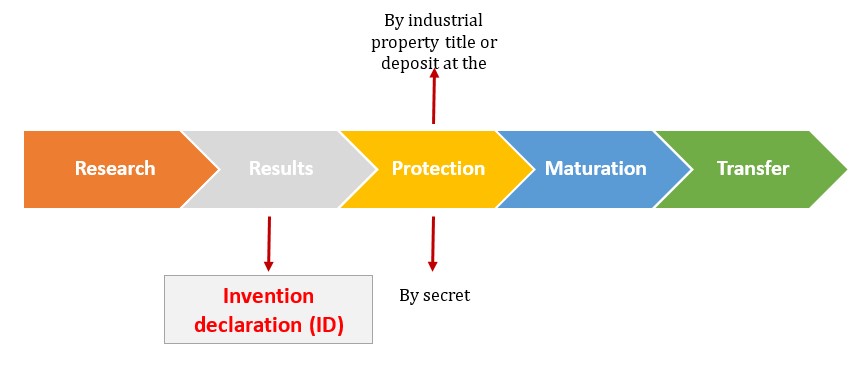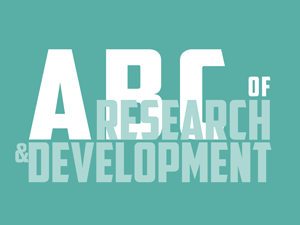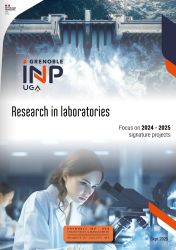article written by Yoann Miccoli
It is the first step in the economic development process.
The employee who is the author of an invention must immediately declare it to the employer (Article R611-1 of the Intellectual Property Code).

Any employee who makes an invention is obliged to declare it to his employer. This obligation concerns all employees and all inventions, whether they are mission-related or not.
90% of patented inventions are made by employee inventors. Depending on the conditions under which the employee’s invention was conceived, the rights to the invention, and therefore the choice of whether or not to file a patent, are either for the employee or the employer. In the latter case, the employee will be entitled to financial compensation. Consequently, any researcher (civil servant or public employee) who produces research results that are likely to be used industrially and/or commercially must declare the nature of his results to his employer (Article R611-12 of the Intellectual Property Code) to enable the employer to determine the rights he believes he holds over the invention. The aim of the declaration is to define, in the long term, whether the invention is protectable (filing of a patent or software) and who, whether the employee or the employer, can do so.
It also makes it possible to determine each employee inventor’s inventive contribution and therefore the rate of remuneration that will be paid to them in the event of exploitation of the invention.
Generally speaking, the declaration of invention makes it possible to identify the framework and scope of the invention developed and to identify its inventors. If there are several inventors, they can draw up a joint declaration.
It must contain several essential pieces of information, in particular concerning
If you wish to declare an invention, we invite you to contact the establishment's intellectual property officer: Yoann MICCOLI (yoann.miccoli@grenoble-inp.fr – 04 76 57 43 09).
What is an Invention Declaration?
The invention declaration (ID) is a document made available to wage-earners with an inventive activity to communicate to their employers the essential information on the nature of their results.It is the first step in the economic development process.
When does it come into play?
The employee who is the author of an invention must immediately declare it to the employer (Article R611-1 of the Intellectual Property Code).
Why declare inventions?
Any employee who makes an invention is obliged to declare it to his employer. This obligation concerns all employees and all inventions, whether they are mission-related or not.90% of patented inventions are made by employee inventors. Depending on the conditions under which the employee’s invention was conceived, the rights to the invention, and therefore the choice of whether or not to file a patent, are either for the employee or the employer. In the latter case, the employee will be entitled to financial compensation. Consequently, any researcher (civil servant or public employee) who produces research results that are likely to be used industrially and/or commercially must declare the nature of his results to his employer (Article R611-12 of the Intellectual Property Code) to enable the employer to determine the rights he believes he holds over the invention. The aim of the declaration is to define, in the long term, whether the invention is protectable (filing of a patent or software) and who, whether the employee or the employer, can do so.
It also makes it possible to determine each employee inventor’s inventive contribution and therefore the rate of remuneration that will be paid to them in the event of exploitation of the invention.
The content of the Invention Statement
Generally speaking, the declaration of invention makes it possible to identify the framework and scope of the invention developed and to identify its inventors. If there are several inventors, they can draw up a joint declaration.It must contain several essential pieces of information, in particular concerning
- Its characteristics and description
- A proposal for classification (mission / non-mission invention)
- The context in which the invention was developed (e.g., in the context of a research contract)
- The application fields of the invention;
- The state of the art (how have industrial needs been met so far and what are the limits? Specify a detailed bibliography.
- The technical and economic advantages of the invention compared to the state of the art (what are the arguments in favour of the invention? Are there competing products or processes?)
- Any of the laboratory’s publications and communications concerning the invention (previous or future)
- Existing patents in the field of the invention
- The Inventors/Authors and Partners involved (identity and contact details of the inventors/authors, the name of their laboratory, their employer, etc.)
- The distribution of contributions between the Inventors/Authors.
- This document will enable DRIVE to protect your invention and therefore to secure your relations with your partners (industrial or not) in your future research projects. It is the starting point of the valorisation process.




